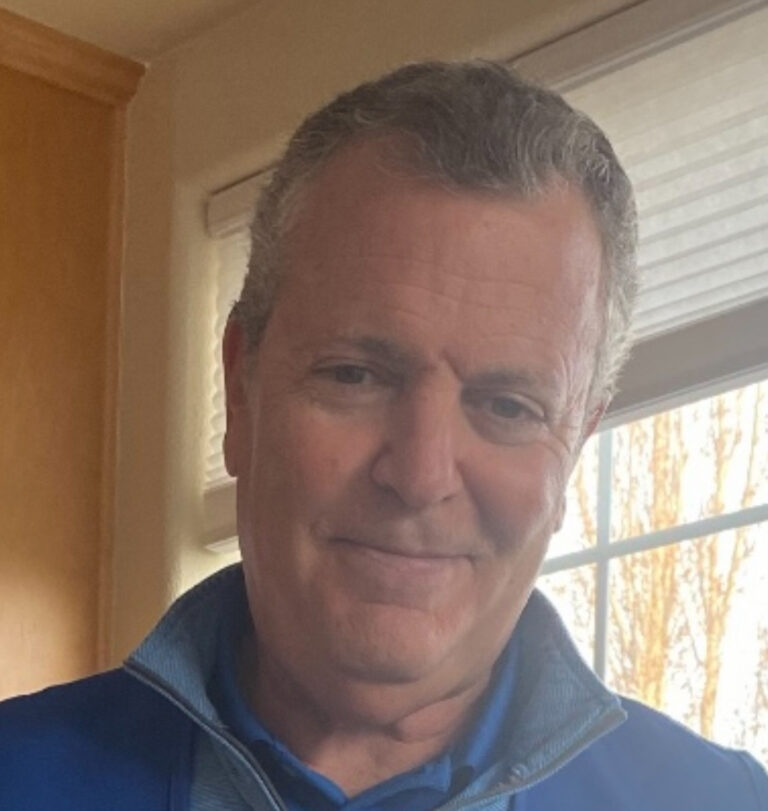
Well-known for his participation in high-level sailing events — most notably, skippering two Volvo Ocean Race campaigns — Knut Frostad has served as Navico’s president and CEO for nearly three years. In June 2021, Brunswick Corp. announced that it was acquiring Navico, which in the trailing 12-month period ending May 31, 2021, had posted sales of $470 million. Navico’s portfolio includes such brands as Lowrance, Simrad, B&G and C-Map.
Soundings Trade Only sat down with Frostad in February at the Miami International Boat Show to talk about Navico’s recent product releases, supply-chain woes, sustainability goals, innovation and the future of the marine trade, especially in integrated electronics systems.
Tell us bit about the recent NSX multifunction display launch and its new operating system.
It’s a huge one for us, probably bigger than what it looks like from the outside because we have redesigned the whole operating system. It’s like Apple throwing iOS out the window and building a new one. It’s really without comparison. But we spent 15 years building the previous one, and we wanted to do it not just because we needed a new system; it’s because we thought that the new generation or future generation of customers need a different user experience.
They need a simplified user experience — not simple, but simplified in the sense that people are expecting to understand a product when they switch it on. They’re not expecting to read a manual to use a product. They’re expecting words and letters that they can understand immediately, not like having to think, What does GPS, GMT-4, what does BSP … what does that mean?
So we have spent three years designing this. And really, we have studied. We have had user groups. We have had people who have not been in the industry to simplify that experience in the sense that people feel, Wow, this is an easy product to use. Now they can use it without having to be a scientist or have an experienced boater help out. That’s why I think it’s a massive revolution. It does not bring a new feature that boating didn’t have, but I think it’s going to make boating more accessible.
From a manufacturing standpoint, it must be nice not to have hardwired buttons. Is this something you are going to push across the entire range?
I think we will. There are still definitely people who strongly believe that there are use cases where you need buttons, and I think we will still have that, but even those can be programmed now.
It’s interesting. You look at all the modern cars that are coming today. They’re moving everything to touch screens. There are some very big panels on the dashboard. They still come with certain buttons, though. I was just in the Lucid car the other day. It was one of the latest, greatest, and they still have massive buttons for volume and music. Right? Why? Because when people drive a car, they suddenly have to change their volume. They don’t want to find something. They just want to touch it without looking, and feeling that button and just do it. And we have some of those use cases, you know?
So it’s a very big thing for us. We’ve had about 100 software engineers working on this for a long time. It’s crazy. We’re trying to simplify, simplify, simplify. So we’ve removed things and removed menus. We timed how long it took users to set up the autopilot. And then we set new benchmarks for how short [a time] we can do it in. I’m not going to give all the numbers, but we have radically shortened it by having people who’ve never done this before, testing them and saying, “OK, set up an autopilot.” And they say, “What’s an autopilot?” That’s where we started.
Is that why you chose Android for the operating system?
The Android decision was something that happened just when I started. We chose it for two reasons. First is that it enables a seamless ecosystem experience with a phone and a tablet because Android is well-suited to create an experience over multiple screen surfaces, whether it’s a phone or your tablet or your multifunction display or your computer at home. It’s a very good platform for that multiscreen experience.
The second part has to do with the architecture of Android. We went pure Android from the beginning. We didn’t import our own; we wrote everything from scratch. And the beauty with that is that if you look at how us and Garmin and Raymarine have done this for years, we have one big software stack that we have built over the years, and it grows and grows and grows. It’s serving more and more products. And every time you want to make a change to it, you’re indirectly influencing another 150 products. Since Android is an app-based architecture, everything is an app, in a way. So when you’re modifying specific code, you’re not touching anything else. And you can work on one piece of the architecture. You don’t have to worry about the rest. You don’t even have to test it.

Are there any other advantages to the approach Navico took?
Software updates. We used to do that once every second month, at best, maybe once every quarter. Now we have no problem doing it daily if we need to. And when you do that software update, instead of doing a gigabyte of software update, you’re doing like one megabyte. And suddenly you have a new fishing feature. So I think the value from this platform is coming step by step by step by step. But it’s like owning a product that’s going to be better and better because you get new features in software updates.
Does keeping manuals out of the box help the business from a sustainability standpoint?
Removing manuals is a big thing for me from that point of view. I can’t really tell you how many tons of paper we shipped around the world, both with planes and ships last year, but we’re shipping enormous amounts of paper around the world — huge, thick manuals. This industry is terrible at it.
Do you think it’ll eventually go to a QR code where users can pop the manuals up on a phone?
The endgame is that you make your products so intuitive that it doesn’t need any manuals. Apple is very far down that road, right? When you buy a new iPhone today, it comes with a tiny little paper piece that says, “Don’t throw it in the microwave,” and “It’s registered somewhere.” And then slowly, you may not discover everything your phone can do, but step by step, you’ll probably find all the 90 percent of the things you can do.
What other sustainability initiatives are going on at Navico?
We started in 2019 removing all plastics from our packaging. Now 94 percent of our product packaging has gone 100 percent paperboard, and we’re talking about 5,000 products. It’s a lot of work. People underestimate what it takes to remove plastic from packaging and products.
We don’t want to have any plastic. We don’t even want to have plastic coatings or paints. So we are using soy-based paints on some products. You can eat the paint, basically.
How are things with the broken supply chain and chip shortages?
In electronics, they’re not better now than they were six months ago. Not at all. I would say there are some pieces of it that are seeing some light at the end of the tunnel, but for the first six months this year, I think it’s going to be as challenging as it’s been the last six months or last 12 months.
We are doing crazy things. I have a crisis meeting every day at 10 o’clock at night for one and a half hours. We’ve been doing that for 18 months, every day except Sundays. I do that with my team. We beefed up our sourcing team a lot. We brought in people from Flextronics and other companies that are big in electronics, because it’s really a war. So it’s not really about strategy and long-term thinking. It’s about this raw, brute force.
But we are working a lot on how we set ourselves up, so we have more resilience going forward. That’s been an ongoing process for us. Today, it’s a situation where it went from being nice to simply have inventory to if you don’t have inventory, you’re dead.
If you don’t have the products in the warehouse, you cannot build anything. So you have to, as soon as you can, get your hands on CPUs, and you may not even need them in the next six months. It’s a crazy market because it’s not sustainable financially. You must throw all this cash to get things that you’re probably not going to need short-term, but you just can’t take the risk of not having it when you get to that time when you’re going to build it.
We are also insourcing more. We already were making 70 percent of our own components because if you outsource, like a lot of the companies in the industry do, now you are dependent on the outsourcing partner to take financial risk on your behalf. If he is not willing to go out and buy CPUs and what’s needed in advance, he’s not going to be able to supply it.
So what happens next is that companies like us and Garmin and others, we loop or leapfrog our sourcing partners and start sourcing on their behalf. Because if not, our outsourcing partner can’t supply this. It’s just crazy.

How would you describe the culture at Navico?
I think we have a very entrepreneurial spirit in the company. I’m focused a lot on letting people loose in the sense that it’s easier in a bigger company. We are not the biggest company in the industry; we have 2,100 employees. But when you grow, you usually start to develop a very stiff environment where everything is controlled and decisions take forever. So I am very focused on empowering people. Sometimes they make wrong decisions, but most of the time they make right decisions. I think that’s key to be successful.
It feels as if performance and innovation in the electronics space have leveled out a bit, much like with smartphones the past few years. What can we expect next?
I think that we’re up for quite a lot of development, because I think the digital experience of owning a boat is becoming a bigger piece of the puzzle. In the past, if you were out boating, you were looking around; now you can experience what you see through the screen, but also around you. When I was a kid visiting New York, we were looking at the Empire State Building. Now, everyone’s like, “Oh, that’s …” and then they’re Googling and they get all that information.
I think we are going to that place with boats, with bigger screens and more submerged digital experiences that kind of support what you see outside, whether it’s underwater or over water. I think that we will see bigger, wider screens with more relevant information. And we will see some intelligence in the electronics, in the sense that rather than you figuring out things, electronics have already figured it out for you and are telling you how to do things.
Do you see people eventually using a multifunction display to search for information and connect with others?
Yeah, both. I’ve talked to some other folks in the marine electronics world, and their opinion, not that it’s right or wrong, is that they see things going, like you said, deeper in the actual unit itself.
I think that the phone is a beautiful piece of technology. And some in our industry are thinking that they can make products that do some of the same. I don’t. For connectivity, for example, the smartphone is unbeatable, right? It can briefcase data. My phone has one terabyte of storage. I can do a complete MFD software update from scratch on this phone without any problems. And if we wanted to build that connectivity technology into our products, we would have to amputate it and compete with Apple technology. You can’t do that. So I think to find where marine electronics fits in, it’s not in its own ecosystem. It’s in your customer’s ecosystem.
What are you looking forward to?
I think we are a fragmented industry, so I think one of the things I really look forward to from Navico, to be a bit selfish, is that our Brunswick mother and father now, they help us with our new siblings to work together in a way we couldn’t do before on offering an integrated solution. What I mean when I say integrated, it’s not just technically integrated. It’s being commercially integrated and making life a little bit simpler for the boatbuilder who doesn’t have to make five phone calls to put these things together.
It sounds as if you’re pro-consolidation.
I am, because I think that simplification is one of the biggest things you can do in our industry. I think it’s really complicated to be a boatbuilder. You have so many suppliers. I mean, 50, 60, 70, 80 suppliers for a small boat, and you must deal with every one of them.
At the end of the day, we want to make it easier for everyone, from the boatbuilder up to the final owner or end user. Vertical integration is one way to ensure a positive experience for everyone, and I think Navico being tied in with Brunswick, and especially the Advanced Systems Group, will be a win-win for the industry.
This article was originally published in the May 2022 issue.











